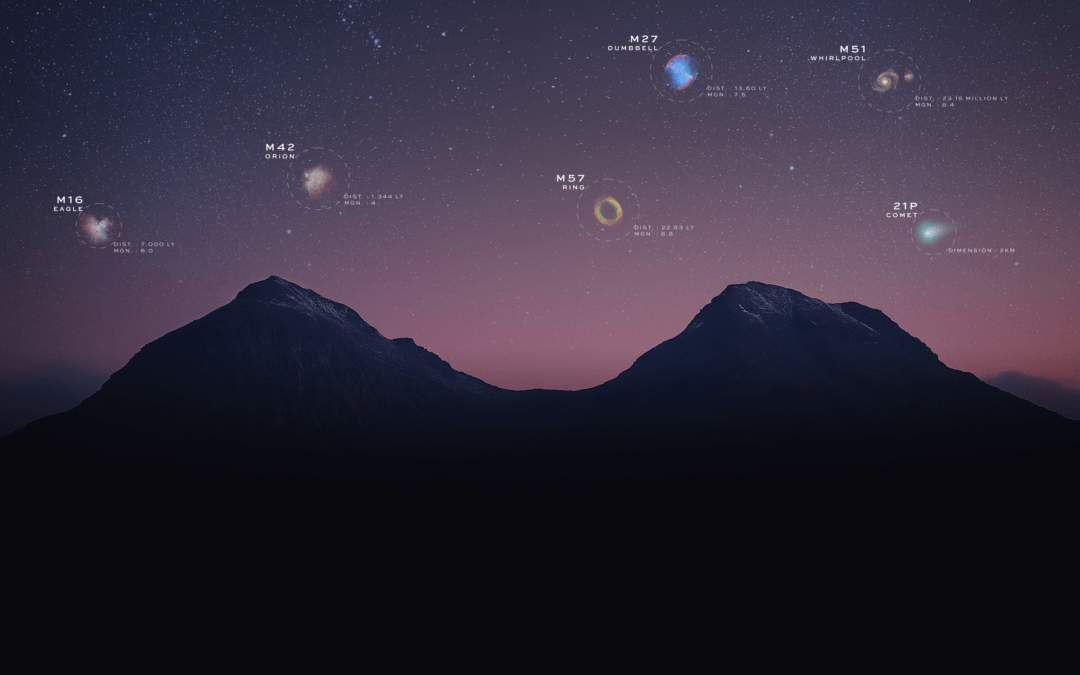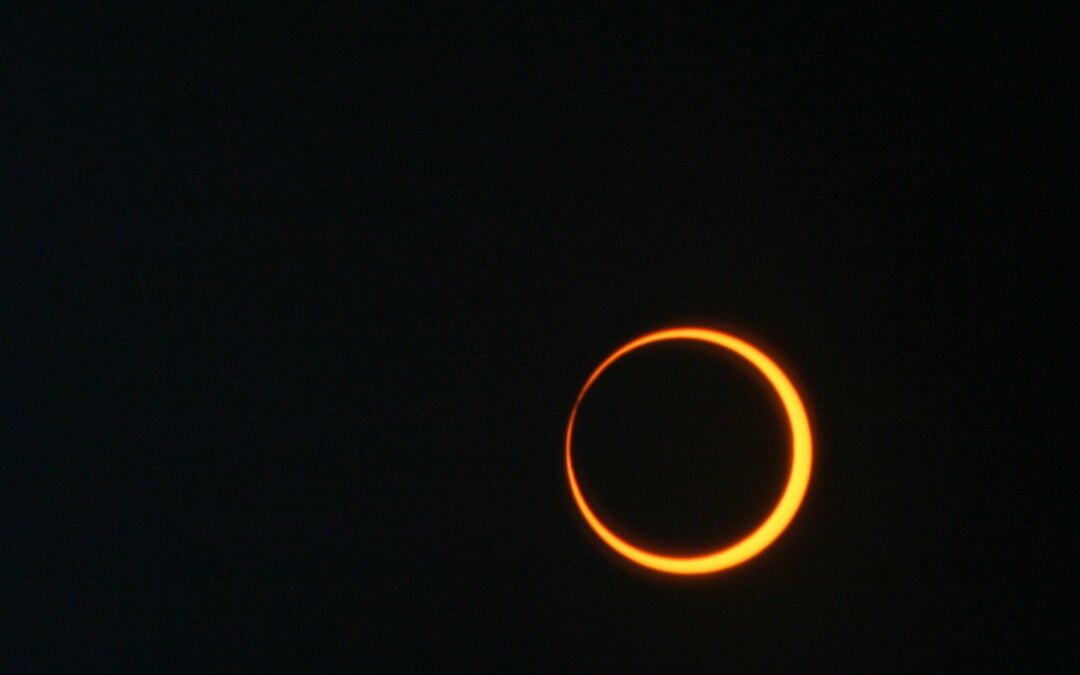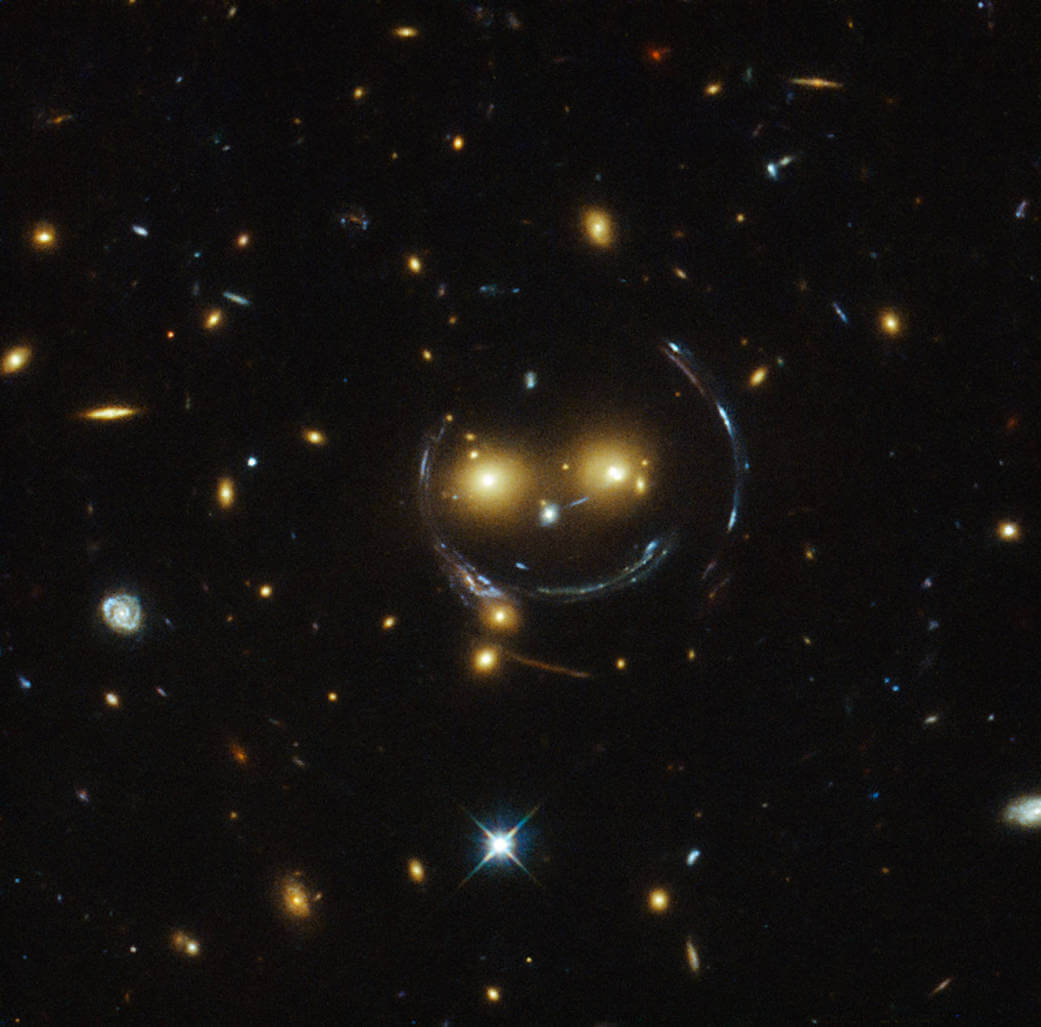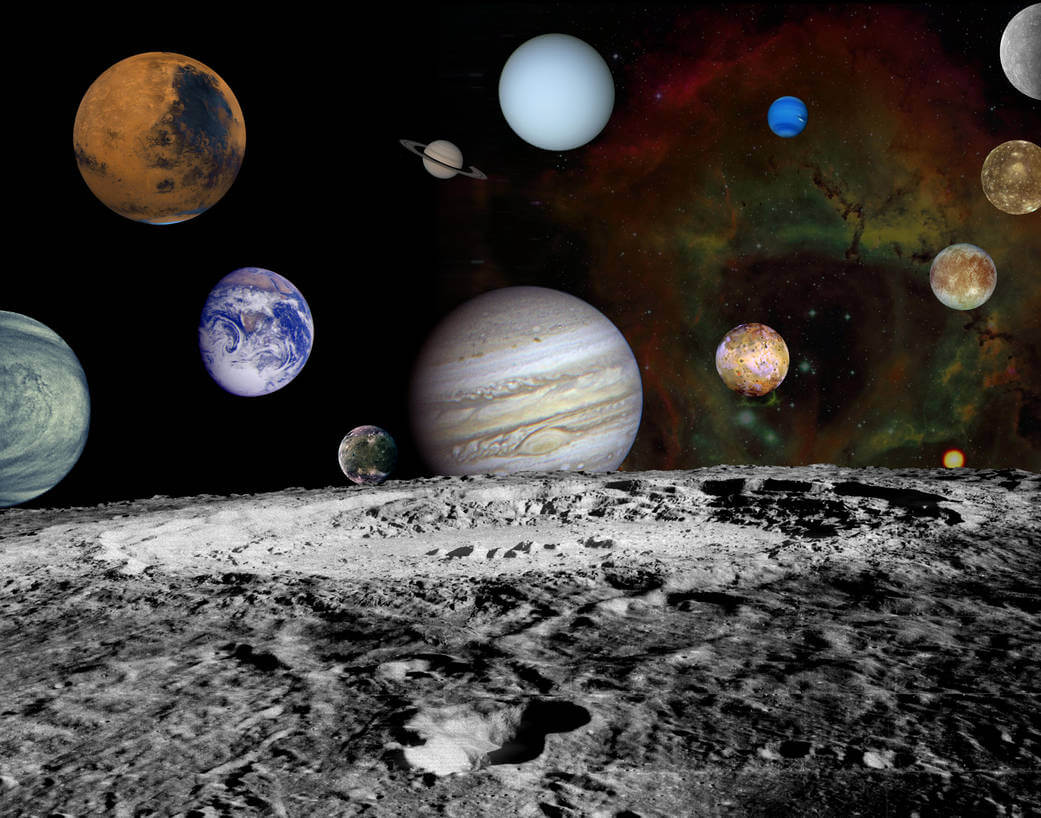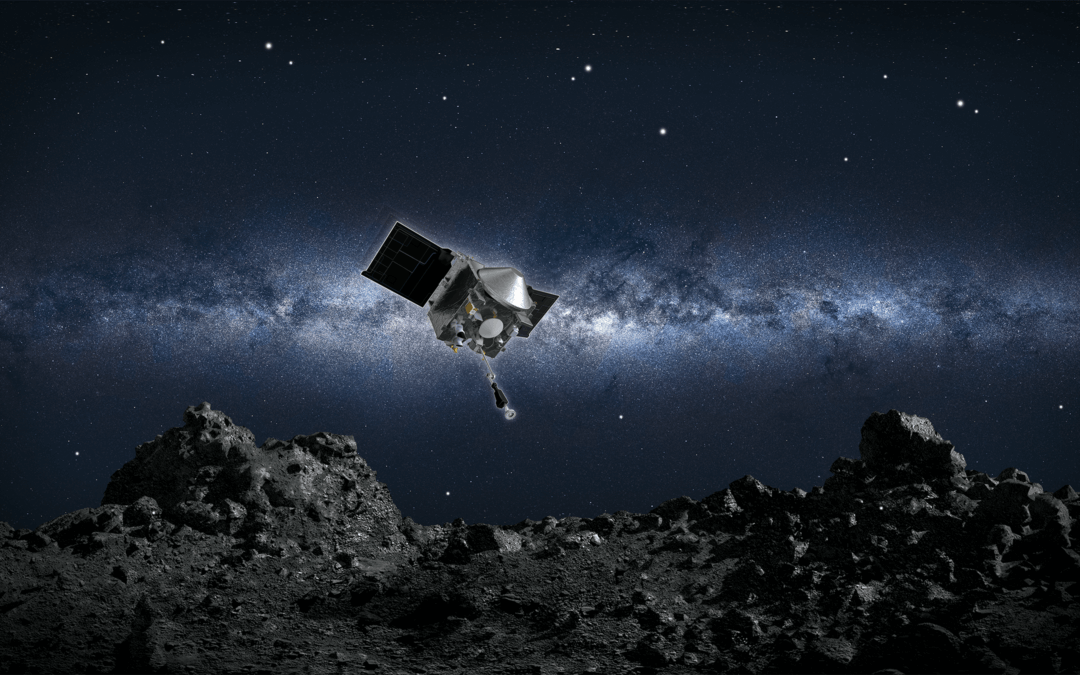Our solar system is filled with planets, asteroids, comets, dwarf planets and trillions of other small objects all orbiting a mid-sized star that we call the Sun. The solar system has eight planets including Earth, a main asteroid belt and regions farther out beyond the planets where countless small objects orbit.
While astronomers have studied much of what makes up our solar system, a lot of space nearby remains unexplored, including many more objects surely to be found in our neighborhood. Part of the reason for this mystery is that our solar system is really, really big – at least in human terms! For example, the Earth is 150 million kilometers (93 million miles) away from the Sun — a distance astronomers call an astronomical unit (AU) — which would take an airliner flying at a typical speed around 20 years to cover. Neptune, the farthest planet, is around five billion km (3 billion mi) from the Sun.
The solar system is so large that when thinking about how big the solar system is, we need to shrink the Sun and planets down far tinier than they really are to comprehend it — and even then it’s still hard to wrap your mind around! From the edge of the Solar System, Earth would just be a pale, blue dot.
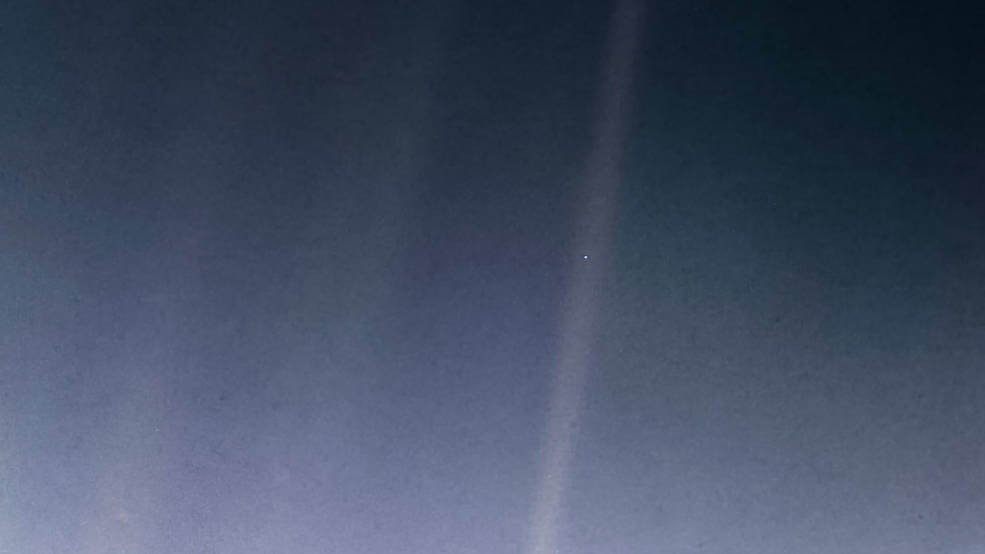
An updated version of the famous “Pale Blue Dot” image. This image was taken by the Voyager 1 spacecraft while it was out past the orbit of Neptune. Through rays of scattered light you can see the Earth as just a pale, blue dot. Credit: NASA/JPL-Caltech
What is in our Solar System?
The solar system has eight planets: Mercury, Venus, Earth, Mars, Jupiter, Saturn, Uranus and Neptune. Pluto, formerly known as the ninth planet, was reclassified as a dwarf planet in 2006. Our Solar System also has a large asteroid belt that’s filled with millions of asteroids ranging in size from a pebble to hundreds of kilometers across. How big is the asteroid belt? It spans about 225 million km (140 million mi) and is located between Mars and Jupiter.
Beyond Neptune is the Kuiper Belt, which extends from 30 to 55 AU (8.2 billion km or 5.1 billion mi). The Kuiper Belt is filled with small, rocky and icy objects, and it’s where many short-period comets likely come from. Pluto can be found in the Kuiper Belt, along with three other dwarf planets, and potentially many more. Astronomers are actively searching the Kuiper Belt for new objects.
Outside of the Kuiper Belt is a vast region called the Oort Cloud, where trillions of small, icy objects orbit, loosely held by the Sun’s gravity. Whereas the Kuiper Belt orbits in the same plane as the planets, the Oort cloud is more like a shell encompassing our Solar System. Minor planets, dwarf planets, comets and other objects also inhabit the Oort Cloud, though astronomers don’t know all that much about what lives so far from the Sun.
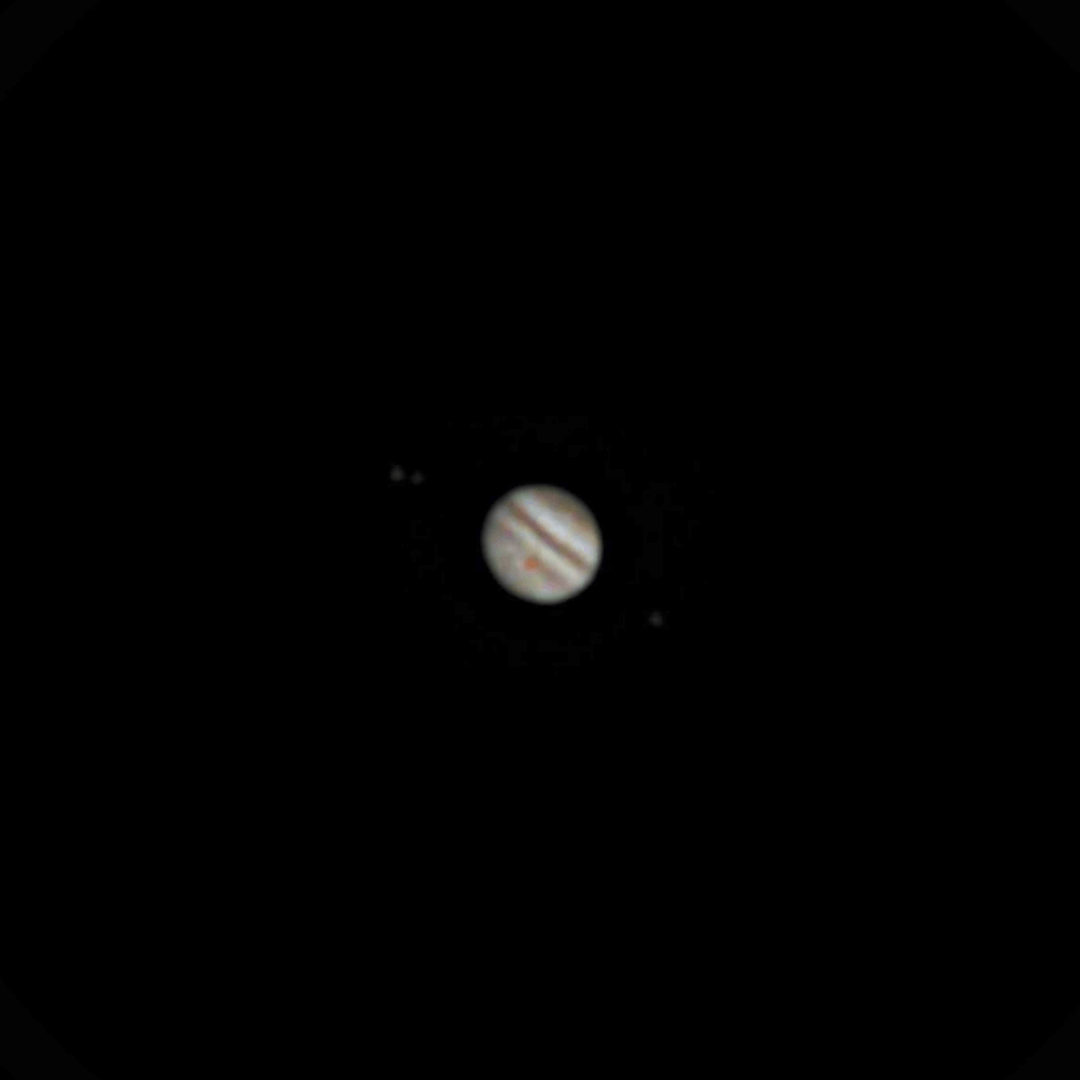
Jupiter, our largest planet, as imaged through a Unistellar eVscope. The great red spot is visible towards the bottom. You can even see a few of its moons in the image!
With a Unistellar Telescope, you can see all seven other planets, and even many comets and asteroids in our Solar System. Observe Saturn’s rings, Jupiter’s great storms and spy on distant Uranus and Neptune, all from your backyard. Smaller objects like asteroids become visible when they occult, or pass in front of, distant stars. Unistellar hosts multiple observing campaigns every year targeting asteroids and other distant objects to help scientists keep an eye on nearby ones and learn more about distant ones.
Where is the edge of the Solar System?
The Oort Cloud starts somewhere between 1,000 and 5,000 AU from the Sun, and extends to around 100,000 AU, or about 15 trillion km (9.3 trillion miles), away, although some estimates place it closer to the Sun and some almost twice as far. The far edge of the Oort Cloud is considered the edge of our Solar System, making our cosmic neighborhood quite big indeed. So, to find how big the solar system is across, we could double that distance, giving us a rough estimate for a diameter of 200,000 AU, or 30 trillion km (18.6 trillion miles). That’s over 3 light years across!
A Solar System size comparison
Typical diagrams of the solar system showing all of the planets don’t really do our cosmic neighborhood justice. The solar system is so big that the planets would be tiny dots, spread so far from each other that it would be impossible to put them all next to each other. To understand how big the solar system is, it’s helpful to compare the Sun and planets to everyday objects.
For example, let’s shrink the Sun to the size of a basketball. In this scenario Mercury, the first planet, would be less than a millimeter across, and located about one meter (3 ft) from the Sun. Venus, the next planet, would be just under two millimeters in size, and about 18 meters (60 ft) away. Our Earth would be 25 meters (80 ft) away, and a bit bigger than Venus, about the size of a small bead. Next up is Mars, at 38 meters (125 ft) away and about one millimeter across.

The approximate sizes of the planets in relation to each. The Sun is so large that, if it were shown, the terrestrial planets would be just small dots! In order from left to right, or closest to farthest from the Sun): Mercury, Venus, Earth, Mars, Jupiter, Saturn, Uranus, Neptune, Pluto (for reference!) Credit: NASA/Lunar and Planetary Institute
Jupiter, the largest planet, would be just about the size of a quarter or euro, at 2.4 centimeters, and 130 meters (425 ft) away from the basketball Sun (more than the length of a football field). Saturn would be 1.9 cm across (or roughly the size of a nickel), and 240 meters (790 ft) away, while Uranus would be 0.8 cm across and 480 m (1,575 ft) away. Neptune, the farthest planet, would be 0.9 cm across, and an incredible 750 m (2,460 ft, around half a mile) away. For our imperial system users, both Uranus and Neptune would be less than a half inch across in this basketball “solar system”.
The edge of the Oort Cloud – the edge of the Solar System – would sit around 2,500 km (1,500 mi) distant from the basketball in this scenario . That’ about the length of the east coast of the U.S! So if our basket-ball sized Sun was in Miami, Florida, the Solar System’s outer reaches would extend all the way to Portland, Maine.
How you can explore the Solar System
Though the Solar System is quite large, you can explore its vast reaches from the comfort of your backyard. Consumer telescopes are powerful enough to bring the planets into crisp detail, explore craters on the Moon and see comets and other objects passing by Earth. With a Unistellar Telescope, you can observe even from bright cities thanks to our Deep Dark Technology, which reduces the effects of light pollution. Plus, you can now even observe the Sun with our Solar Experience! So you can voyage through every aspect of our star system from here on Earth.
Skygazing isn’t just for pleasure, either. Scientists exploring our Solar System need the help of Citizen Astronomers, who make observations of planets, asteroids and even spacecraft to better understand them. Unistellar Network members keep an eye on Near-Earth Asteroids to aid Planetary Defense, observe passing comets to refine their orbits and scan the outer reaches of the Kuiper Belt and Oort Cloud for new minor planets. Learn more about how you can explore our vast, wonderful Solar System!
Further readings
3 Reasons to observe this month
Every month, discover three unmissable celestial events to observe with your Unistellar telescope.
Unistellar Community Included In Multiple Scientific Papers
Did you know Unistellar Citizen Astronomers are often cited in published scientific papers? Find out how you can contribute too!
When Is the Next Solar Eclipse, and How to Observe It With a Unistellar Telescope
An annular solar eclipse is visible from the Americas on October 14. Learn how to witness the Ring of Fire with your Unistellar Telescope!
Halloween Observing Guide: Spooky Deep-Sky Objects
These Halloween deep-sky objects will add some light to those dark, spooky nights. Treats, tricks, and telescopes await!
How Big Is the Solar System?
If the Sun were the size of a basketball, do you know how big the Earth would be? Find out how big the Solar System really is!
See OSIRIS-REx, NASA’s First Asteroid Sample Return Mission, as it Drops off Pieces of Asteroid Bennu
NASA's first asteroid return sample mission, OSIRIS-REx, is headed back towards Earth with precious cargo. Join us in observing it Sept. 24!
